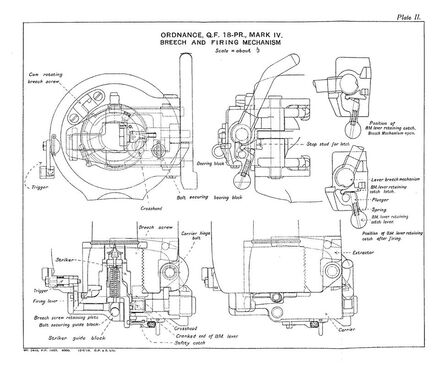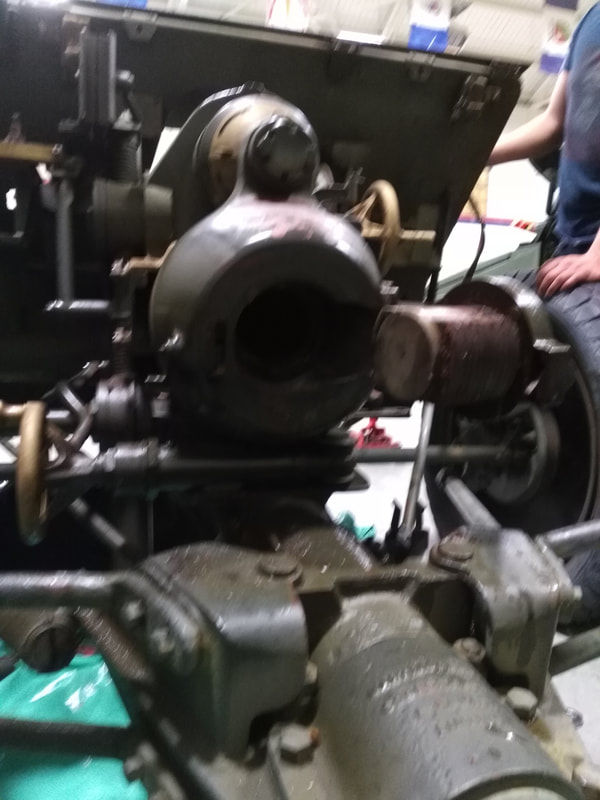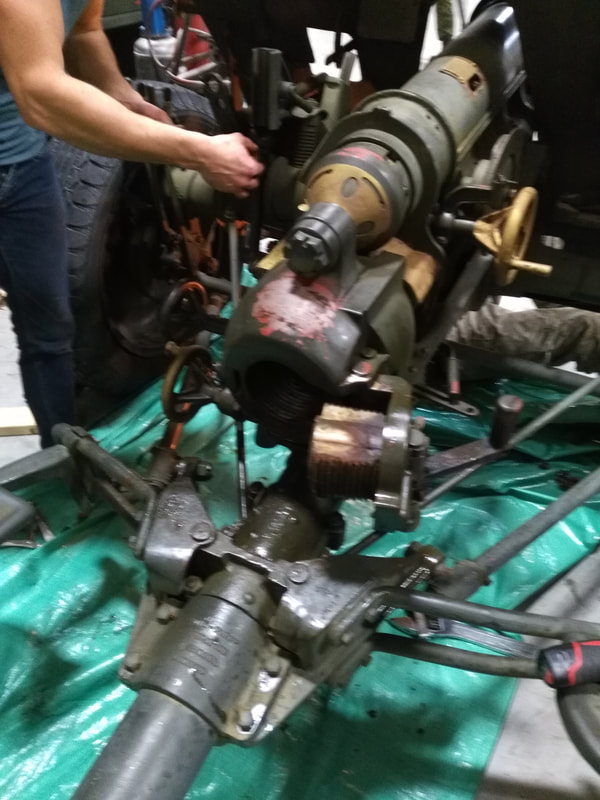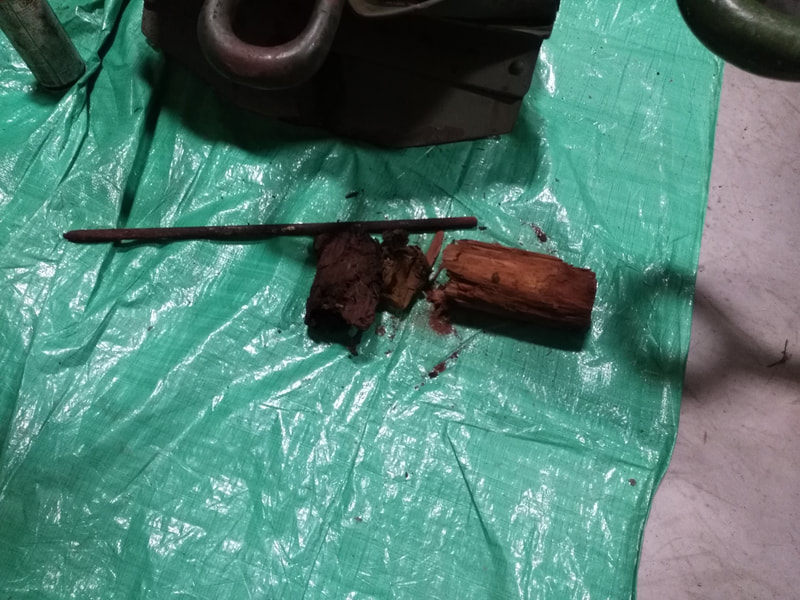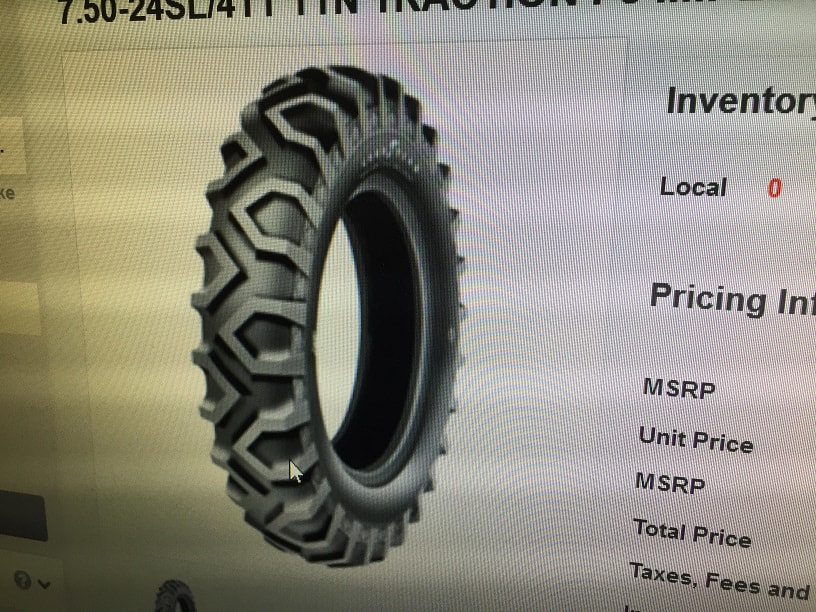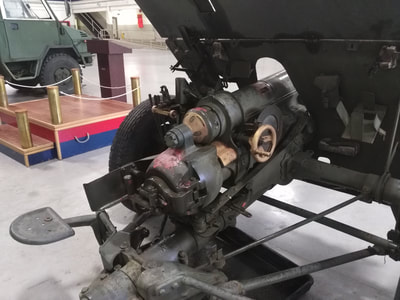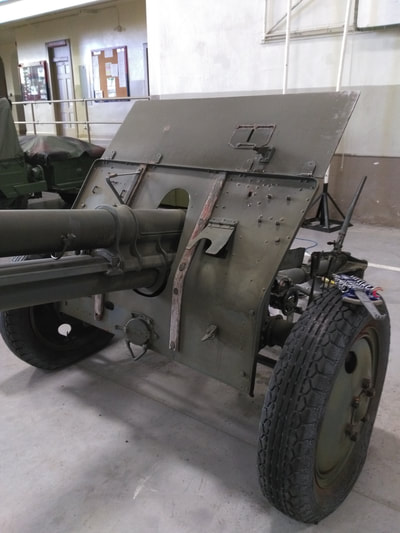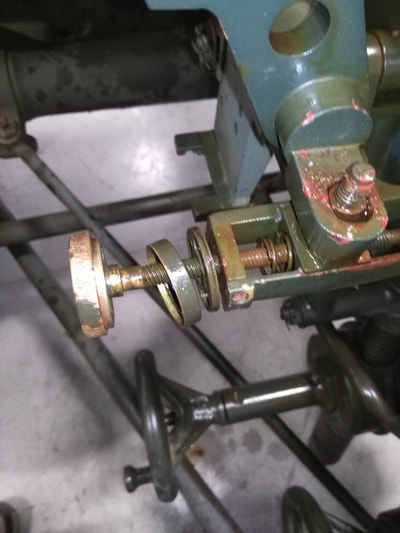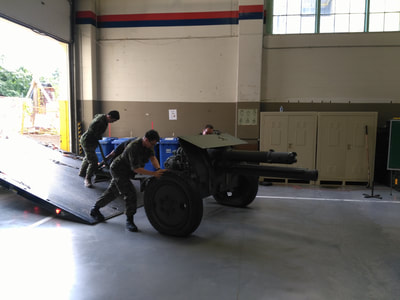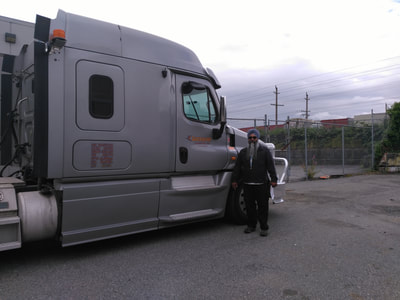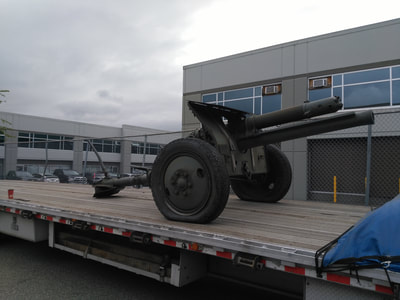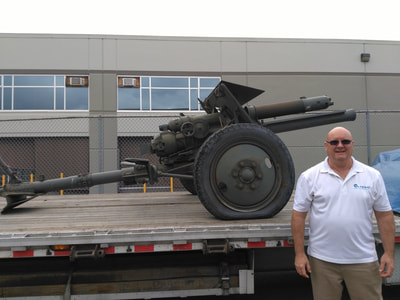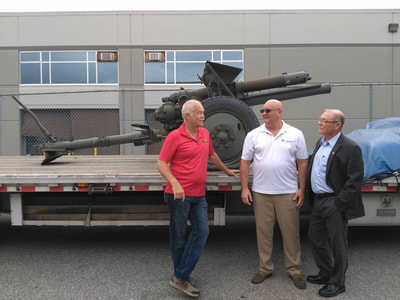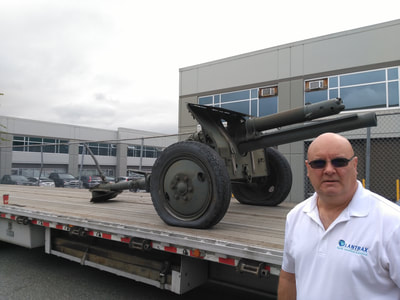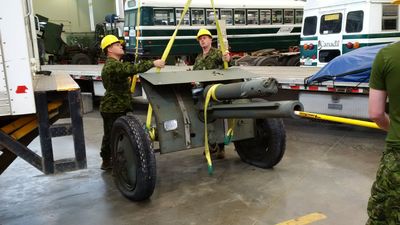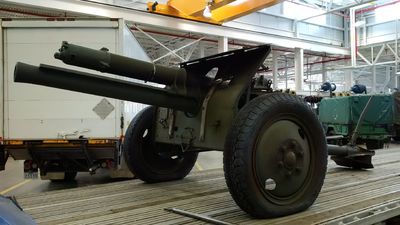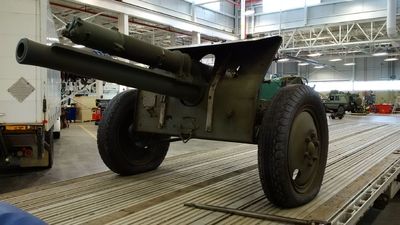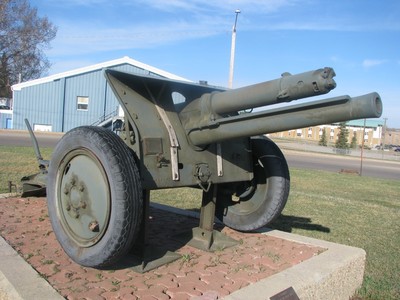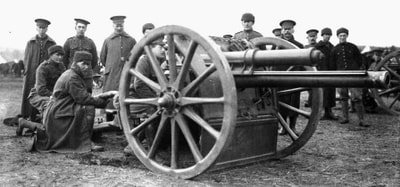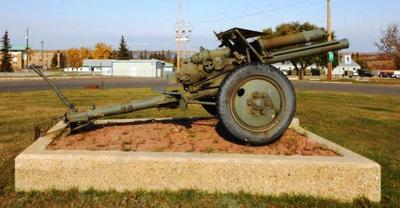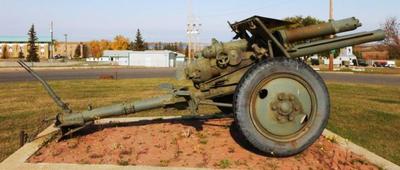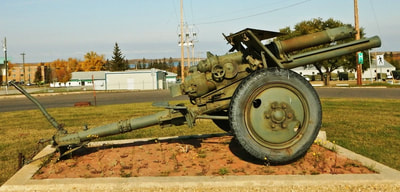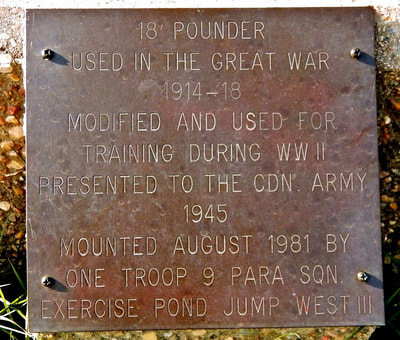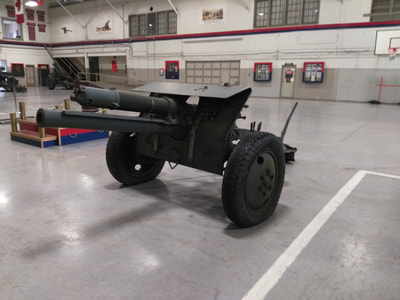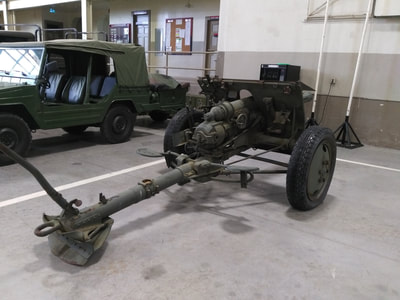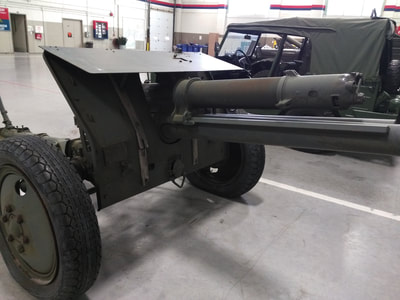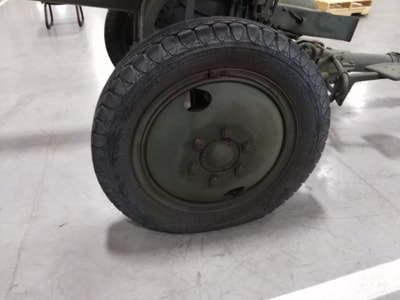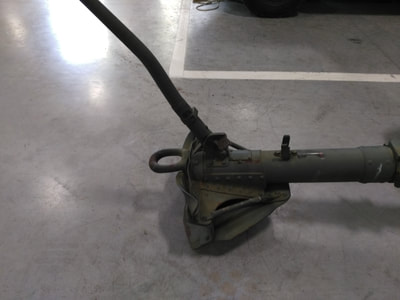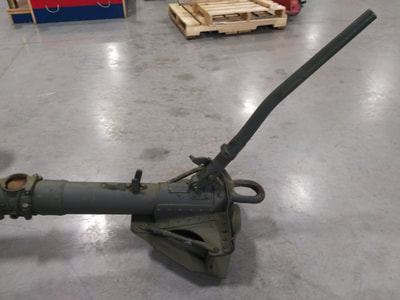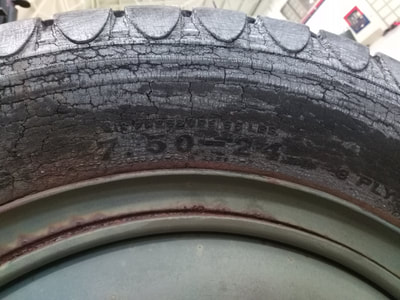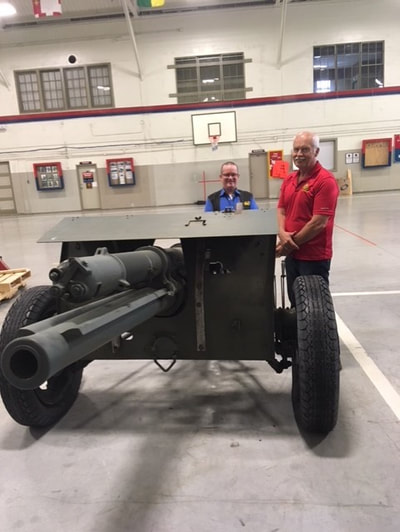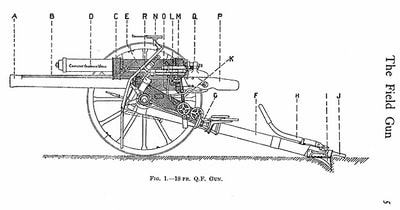Quick-Firing 18 Pounder Field Gun
19 December 2019
Meeting held with KAL Tire representative. Concerns were raised regarding the safety aspect of the split rims. They're 80 years old and were sitting, exposed to the weather, for 30 years. There may be rust that would jeopardize the installation of new tires.
Meeting held with KAL Tire representative. Concerns were raised regarding the safety aspect of the split rims. They're 80 years old and were sitting, exposed to the weather, for 30 years. There may be rust that would jeopardize the installation of new tires.
11 December 2019
Additional funds are presented at the Museum AGM meeting the requirements for ordering the tires. They've now been ordered.
Additional funds are presented at the Museum AGM meeting the requirements for ordering the tires. They've now been ordered.
8 December 2019
The 78th Fraser Highlanders Association of Vancouver has answered our call for assistance in fundraising for our new tires by providing $1,000.00 to the tire fund! A big shout out to a supportive organization!
The 78th Fraser Highlanders Association of Vancouver has answered our call for assistance in fundraising for our new tires by providing $1,000.00 to the tire fund! A big shout out to a supportive organization!
|
6 December 2019
Detailed drawings of the 18 Pounder were received from the RCA Museum in Shilo Manitoba! |
| ||||||
|
2 August 2019
Doug Knight provides a copy of his latest monograph, The 18-Pounder Field Gun in Canadian Service |
| ||||||

22 March 2019
John Redmond, the Assistant Curator, reaches out to an organization in Great Britain that has a similar vintage 18 pounder.
Hi John
Your email was forward on to me as the member of the Garrison who restored the WW2, 18 Pdr Mk2 you saw in the Gunner Magazine. You may have read more in the second part of the article in the February issue of the Gunner. There is also a pictorial history of the restoration in the Facebook page “Artillery of the 20th Century” https://www.facebook.com/groups/803011109833325/ if there is anything specific I can help with please don’t hesitate to contact me.
Keith Brigstock
The Garrison Artillery Volunteers
“Giving a future to the Artillery of the Past”
Training Officer
www.thegarrison.org.uk
Eve 01672 564562
Mob 07802 516547
John Redmond, the Assistant Curator, reaches out to an organization in Great Britain that has a similar vintage 18 pounder.
Hi John
Your email was forward on to me as the member of the Garrison who restored the WW2, 18 Pdr Mk2 you saw in the Gunner Magazine. You may have read more in the second part of the article in the February issue of the Gunner. There is also a pictorial history of the restoration in the Facebook page “Artillery of the 20th Century” https://www.facebook.com/groups/803011109833325/ if there is anything specific I can help with please don’t hesitate to contact me.
Keith Brigstock
The Garrison Artillery Volunteers
“Giving a future to the Artillery of the Past”
Training Officer
www.thegarrison.org.uk
Eve 01672 564562
Mob 07802 516547
21 November 2018
Bombardier Marty Vanderzalm came out with his team Vanderzalm, Parker and Wesley, and achieved some significant milestones on the restoration. The breech is now open! There was a time that we thought that it would never open. However, with the application of some trusty penetrating oil and the judicial use of heat, the breech swung open. It still needs some extensive cleaning before it will open freely but we can now scrub down the barrel and work on the firing mechanism.
Speaking of the barrel: When we shone a flashlight down we were quite dejected at first. There appeared to be a concrete plug placed in the barrel that would have caused a horrendous problem. Luckily, once the breech was opened, the plug turned out to be wooden with some old rags. Other than that, the barrel looks in excellent condition. The shield was also removed to allow us to access some of the elevation and traversing mechanism. That's the task for 16th January 2019. In the meantime, we're still trying to track down some tires.
Bombardier Marty Vanderzalm came out with his team Vanderzalm, Parker and Wesley, and achieved some significant milestones on the restoration. The breech is now open! There was a time that we thought that it would never open. However, with the application of some trusty penetrating oil and the judicial use of heat, the breech swung open. It still needs some extensive cleaning before it will open freely but we can now scrub down the barrel and work on the firing mechanism.
Speaking of the barrel: When we shone a flashlight down we were quite dejected at first. There appeared to be a concrete plug placed in the barrel that would have caused a horrendous problem. Luckily, once the breech was opened, the plug turned out to be wooden with some old rags. Other than that, the barrel looks in excellent condition. The shield was also removed to allow us to access some of the elevation and traversing mechanism. That's the task for 16th January 2019. In the meantime, we're still trying to track down some tires.
|
18 October 2018
Bombardier Marty Vanderzalm brought out his crew to check out the 18 pounder. He has some capabilities that we could definitely use, including access to a sand blaster. This probably won't take place until the spring. In the meantime we're looking for tires: 7.5" x 24" with a smooth tread. Marty came up with an agricultural tire that is the same size but the tread is way too aggressive. (the price was also rather substantial) Still looking. |
25 July 2018
Tony Gee came out to give Leon Jensen some assistance with the restoration. More bronze items have been revealed on the carriage. The breech remains closed and the handspike remains in the extended position.
Tony Gee came out to give Leon Jensen some assistance with the restoration. More bronze items have been revealed on the carriage. The breech remains closed and the handspike remains in the extended position.
18 July 2018
The 15th Field Artillery Museum & Archives Society has held a meeting to discuss the future work on the 18 Pounder. It has been decided that we will restore the gun to a show condition that will highlight the operation of the breech mechanism, the elevation and traversing mechanisms and the sighting equipment. In order to achieve this the gun requires selective removal of paint in order to show the various markings and substantial lubrication of moving parts. The breech appears to have two tack welds that require removal. Various leather pouches and covers require replacement. A new pair of tires are essential in order to move the gun with minimum effort.
The following pictures provide a brief look at the work conducted after the meeting. The upper shield flap now moves, the handspike moves slightly, all hand wheels are frozen. An aperture setting immediately forward rotates and appears to be of bronze material. The welds have been ground but no movement of the breech.
The 15th Field Artillery Museum & Archives Society has held a meeting to discuss the future work on the 18 Pounder. It has been decided that we will restore the gun to a show condition that will highlight the operation of the breech mechanism, the elevation and traversing mechanisms and the sighting equipment. In order to achieve this the gun requires selective removal of paint in order to show the various markings and substantial lubrication of moving parts. The breech appears to have two tack welds that require removal. Various leather pouches and covers require replacement. A new pair of tires are essential in order to move the gun with minimum effort.
The following pictures provide a brief look at the work conducted after the meeting. The upper shield flap now moves, the handspike moves slightly, all hand wheels are frozen. An aperture setting immediately forward rotates and appears to be of bronze material. The welds have been ground but no movement of the breech.
29 June 2018
Our 18 Pounder makes it into the Cloverdale Reporter. https://www.cloverdalereporter.com/news/surrey-says-howdy-to-howitzer/
Our 18 Pounder makes it into the Cloverdale Reporter. https://www.cloverdalereporter.com/news/surrey-says-howdy-to-howitzer/
28 June 2018 PM
Ian at Clover Towing has got his Artillery Gun Handling techniques perfected! It's pretty tight going down the alley at the Bessborough Armoury North East door, but he had no problems at all. From there it was rolled straight to the Gun Park. (Okay, honestly, we've got two flat tires on a gun that's been sitting outside for 35 years. We used the pallet jack to lift it up by the axle and still had to put a lot of muscle into moving it! We need a couple of new 7.50 x 24" tires. Anybody know where I can get them?) Gun detail photographs at the bottom of this page.
Ian at Clover Towing has got his Artillery Gun Handling techniques perfected! It's pretty tight going down the alley at the Bessborough Armoury North East door, but he had no problems at all. From there it was rolled straight to the Gun Park. (Okay, honestly, we've got two flat tires on a gun that's been sitting outside for 35 years. We used the pallet jack to lift it up by the axle and still had to put a lot of muscle into moving it! We need a couple of new 7.50 x 24" tires. Anybody know where I can get them?) Gun detail photographs at the bottom of this page.
28 June 2018 AM
It's arrived! Quicksilver was at Lantrax's location by 9:00 AM. These guys are awesome! A really fast crossload over to Clover Towing and the two drivers shake hands on the successful transfer.
It's arrived! Quicksilver was at Lantrax's location by 9:00 AM. These guys are awesome! A really fast crossload over to Clover Towing and the two drivers shake hands on the successful transfer.
27 June 2018
Our friends at Lantrax Logistics in Surrey, BC have lined up a great trucker from Quicksilver Transport Ltd to move the gun from Wainwright to Lantrax Logistics location.
Our friends at Lantrax Logistics in Surrey, BC have lined up a great trucker from Quicksilver Transport Ltd to move the gun from Wainwright to Lantrax Logistics location.
26 June 2018
The 18 Pounder has been loaded on the flatbed by the soldiers from 3 CDSB Edmonton Garrison Wainwright Technical Services Branch Maintenance Company (the Garrison Wainwright maintainers). After 35 years sitting out in the Wainwright weather, both the hot, dusty summer and the cold, snowy winters, the gun is on it's way to some indoor accommodation in Vancouver.
The 18 Pounder has been loaded on the flatbed by the soldiers from 3 CDSB Edmonton Garrison Wainwright Technical Services Branch Maintenance Company (the Garrison Wainwright maintainers). After 35 years sitting out in the Wainwright weather, both the hot, dusty summer and the cold, snowy winters, the gun is on it's way to some indoor accommodation in Vancouver.
Press Release 19 June 2018
Vancouver - The Vancouver Artillery Association announces the expected arrival of a First World War Quick-Firing 18 Pounder field gun. It was so named because of the weight of the projectile it fired. “This gun was the mainstay of the Canadian Field Artillery during the war. The 31st Battery, perpetuated by Vancouver's 15th Field Artillery Regiment, was equipped with the 18-pounder and the 68th Battery, deployed to Northern Russia, went with the same weapon,” according to Dr. Peter Moogk, the curator at the Regimental Museum.
It is doubtful that this particular gun went overseas during the First World War. It was probably used for training gunners in Canada. The president of the Vancouver Artillery Association, Leon Jensen, tracked it down while working on the Regimental history website, www.vancouvergunners.ca. The 15th Brigade, Canadian Field Artillery, was formed in 1920 and was equipped with 18-pounders. After the 1938 conversion of the regiment to the 15th (Vancouver) Coast Artillery Brigade, the unit still manned these field guns at Steveston and Point Atkinson. In the interwar years the guns had been modernized by having pneumatic tires replace the original wagon wheels to allow for quicker moves. Photos of soldiers handling an 18-pounder and stories that the last of them had been sent off to Camp Wainwright led Colonel Jensen to see if he could track one of them down.
“When we received the call from Colonel Jensen we were in the midst of Base Wainwright’s renovation plans. There was an old 18 pounder that had been sitting in the middle of the traffic circle for at least the last forty years. It didn’t fit into the new plans and it was a shame that it was sitting there exposed to the elements,” according to Major Jillian Reiten. “The return of the gun to the Regiment that was probably the original owners of it was a great suggestion. Their plans to refurbish it to museum quality made it that more worthwhile for us to provide assistance in the loading process.”
Canadian Forces Base Wainwright is 1300 kilometers from the 15th Field Artillery Regiment Museum, located in the Bessborough Armoury in Kitsilano. The museum is a non-profit society and is supported by the Canadian Armed Forces' Directorate of History and Heritage as well as by private donations. Fortunately, many of the Museum members are also affiliated with other organizations. Leon Jensen is also a Director with the Langley Rotary Club. He was the chairman of this year’s Tip ‘n Taste fundraising event at the Cascades Casino in Langley City that raised funds for the Nicomekl Enhancement Society. It turns out that the President of the Langley Rotary Club, Robert Hilmer is a Senior Partner of Lantrax Logistics. “We organize freight loads running past Wainwright, Alberta all the time. This is the first time that I’ve ever been asked to haul a World War I artillery piece but we looked at it as a new challenge and we’re proud to support a group of veterans that are working at preserving a piece of our Canadian history.”
The 40-foot trailer carrying the gun could not navigate Vancouver's narrow streets around the armoury so the Vancouver Artillery Association reached out to another, local firm, Clover Towing. Cari Robertson thought that she had heard just about everything when it came to requests for towing, “Then you get a retired Colonel asking if you could help move a World War I howitzer coming in from Alberta. That was a new one! It’s not very often we get to move something like this and our drivers would be excited to be able to transport such a unique piece of equipment. Looking forward to its arrival!”
It’s T-minus 2 weeks before the expected arrival of this unique piece, probably the only one of its kind in the province of British Columbia.
Vancouver - The Vancouver Artillery Association announces the expected arrival of a First World War Quick-Firing 18 Pounder field gun. It was so named because of the weight of the projectile it fired. “This gun was the mainstay of the Canadian Field Artillery during the war. The 31st Battery, perpetuated by Vancouver's 15th Field Artillery Regiment, was equipped with the 18-pounder and the 68th Battery, deployed to Northern Russia, went with the same weapon,” according to Dr. Peter Moogk, the curator at the Regimental Museum.
It is doubtful that this particular gun went overseas during the First World War. It was probably used for training gunners in Canada. The president of the Vancouver Artillery Association, Leon Jensen, tracked it down while working on the Regimental history website, www.vancouvergunners.ca. The 15th Brigade, Canadian Field Artillery, was formed in 1920 and was equipped with 18-pounders. After the 1938 conversion of the regiment to the 15th (Vancouver) Coast Artillery Brigade, the unit still manned these field guns at Steveston and Point Atkinson. In the interwar years the guns had been modernized by having pneumatic tires replace the original wagon wheels to allow for quicker moves. Photos of soldiers handling an 18-pounder and stories that the last of them had been sent off to Camp Wainwright led Colonel Jensen to see if he could track one of them down.
“When we received the call from Colonel Jensen we were in the midst of Base Wainwright’s renovation plans. There was an old 18 pounder that had been sitting in the middle of the traffic circle for at least the last forty years. It didn’t fit into the new plans and it was a shame that it was sitting there exposed to the elements,” according to Major Jillian Reiten. “The return of the gun to the Regiment that was probably the original owners of it was a great suggestion. Their plans to refurbish it to museum quality made it that more worthwhile for us to provide assistance in the loading process.”
Canadian Forces Base Wainwright is 1300 kilometers from the 15th Field Artillery Regiment Museum, located in the Bessborough Armoury in Kitsilano. The museum is a non-profit society and is supported by the Canadian Armed Forces' Directorate of History and Heritage as well as by private donations. Fortunately, many of the Museum members are also affiliated with other organizations. Leon Jensen is also a Director with the Langley Rotary Club. He was the chairman of this year’s Tip ‘n Taste fundraising event at the Cascades Casino in Langley City that raised funds for the Nicomekl Enhancement Society. It turns out that the President of the Langley Rotary Club, Robert Hilmer is a Senior Partner of Lantrax Logistics. “We organize freight loads running past Wainwright, Alberta all the time. This is the first time that I’ve ever been asked to haul a World War I artillery piece but we looked at it as a new challenge and we’re proud to support a group of veterans that are working at preserving a piece of our Canadian history.”
The 40-foot trailer carrying the gun could not navigate Vancouver's narrow streets around the armoury so the Vancouver Artillery Association reached out to another, local firm, Clover Towing. Cari Robertson thought that she had heard just about everything when it came to requests for towing, “Then you get a retired Colonel asking if you could help move a World War I howitzer coming in from Alberta. That was a new one! It’s not very often we get to move something like this and our drivers would be excited to be able to transport such a unique piece of equipment. Looking forward to its arrival!”
It’s T-minus 2 weeks before the expected arrival of this unique piece, probably the only one of its kind in the province of British Columbia.
The 18 Pounder settling into its new home at Bessborough Armoury.
|
Handbook for the 18 Pounder Quick Firing Gun, Land Service 1909
|
| ||||||
Conversion Completed
To be fair, some progress was being made in the mechanisation process; late in May 1938 the recruits already mentioned were permitted - as a great privilege - to witness the first conversion of field guns from horse to mechanical draught at the Armament and General (A&G) Workshops in Trentham. Guns converted were 18-prs Mk 1 and 2, and 4.5-in howitzers. Conversion involved removing the old wooden wheels, brake gear etc and replacing them with parts from kits made up by the American firm of Martin Parry. Production of these kits came about because the US Army also had numbers of obsolete equipments identical to our 18-prs, except that they had been made to take the French M1897 75-mm ammunition. Each kit consisted basically of two pneumatic-tyred steel disc wheels on stub axles carried on a cranked adapter which fitted over the end of the original axletree. Included were the necessary radius rods, brake gear, layers' seat brackets, etc. Conversion enabled the guns to be safely towed at speeds up to 30 mph (48 kph) on good roads, but increased the preponderance of weight on the trails in action. This was particularly noticeable with the 18-pr, making it rather harder to handle. The limber was also converted by the fitting of similar steel wheels. For some unknown reason it then became known as 'trailer'.
http://www.oocities.org/capecanaveral/hangar/3337/hotg/Guns/mech3b.htm
To be fair, some progress was being made in the mechanisation process; late in May 1938 the recruits already mentioned were permitted - as a great privilege - to witness the first conversion of field guns from horse to mechanical draught at the Armament and General (A&G) Workshops in Trentham. Guns converted were 18-prs Mk 1 and 2, and 4.5-in howitzers. Conversion involved removing the old wooden wheels, brake gear etc and replacing them with parts from kits made up by the American firm of Martin Parry. Production of these kits came about because the US Army also had numbers of obsolete equipments identical to our 18-prs, except that they had been made to take the French M1897 75-mm ammunition. Each kit consisted basically of two pneumatic-tyred steel disc wheels on stub axles carried on a cranked adapter which fitted over the end of the original axletree. Included were the necessary radius rods, brake gear, layers' seat brackets, etc. Conversion enabled the guns to be safely towed at speeds up to 30 mph (48 kph) on good roads, but increased the preponderance of weight on the trails in action. This was particularly noticeable with the 18-pr, making it rather harder to handle. The limber was also converted by the fitting of similar steel wheels. For some unknown reason it then became known as 'trailer'.
http://www.oocities.org/capecanaveral/hangar/3337/hotg/Guns/mech3b.htm
Cloverdale Reporter
The local paper covered the 18 Pounder as it travelled through on its way to Bessborough Armoury. Check it out here. Surrey says howdy to howitzer.
The local paper covered the 18 Pounder as it travelled through on its way to Bessborough Armoury. Check it out here. Surrey says howdy to howitzer.
Vancouver Courier
The local newspaper did a feature story on our 18 pounder. Check it out here.Vancouver is now home to a really big, really rare gun.
The local newspaper did a feature story on our 18 pounder. Check it out here.Vancouver is now home to a really big, really rare gun.
|
|
|

